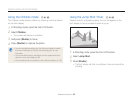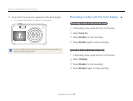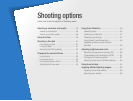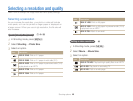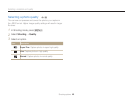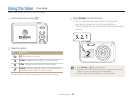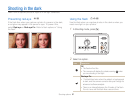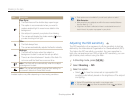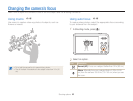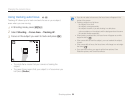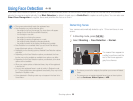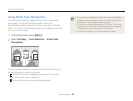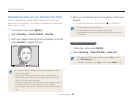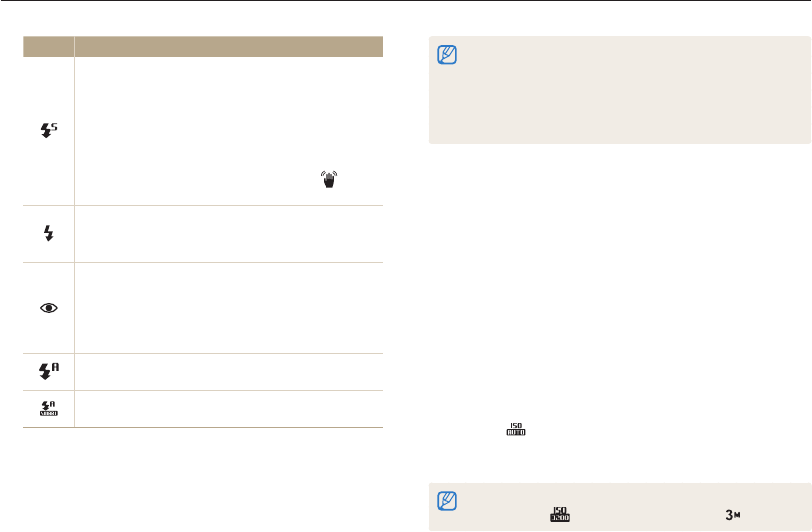
Shooting options
52
Shooting in the dark
•
Flash options are not available if you set burst options or select
Blink Detection.
•
Make sure that your subjects are within the recommended distance
from the flash. (p. 114)
•
If light from the flash is reflected or there is a substantial amount of
dust in the air, tiny spots may appear in your photo.
Adjusting the ISO sensitivity
The ISO sensitivity is the measure of a film’s sensitivity to light as
defined by the International Organization for Standardization (ISO).
The higher the ISO sensitivity you select, the more sensitive to
light your camera becomes. With a higher ISO sensitivity, you can
get a better photo without using the flash.
1
In Shooting mode, press [
m
].
2
Select Shooting ISO.
3
Select an option.
•
Select to have the camera set an appropriate ISO
sensitivity automatically based on the brightness of the subject
and lighting.
•
Higher ISO sensitivities may result in more image noise.
•
You can select only when the resolution is set to and below.
p
Icon Description
Slow Sync:
•
The flash fires and the shutter stays open longer.
•
This option is recommended when you want to
capture ambient light to reveal more details in the
background.
•
Use a tripod to prevent your photos from blurring.
•
The camera will display the shake warning when
you are shooting in low light.
Fill in:
•
The flash always fires.
•
The camera automatically adjusts the flash's intensity.
Red-eye:
•
The flash will fire twice when the subject or
background is dark to reduce the red-eye effect.
•
There is an interval between 2 bursts of the flash. Do
not move until the flash fires a second time.
Auto: The flash will fire automatically when the subject
or background is dark.
Auto: The camera will select a proper flash setting for
the scene it detects in Smart Auto mode.
Available options may differ depending on the shooting conditions.



